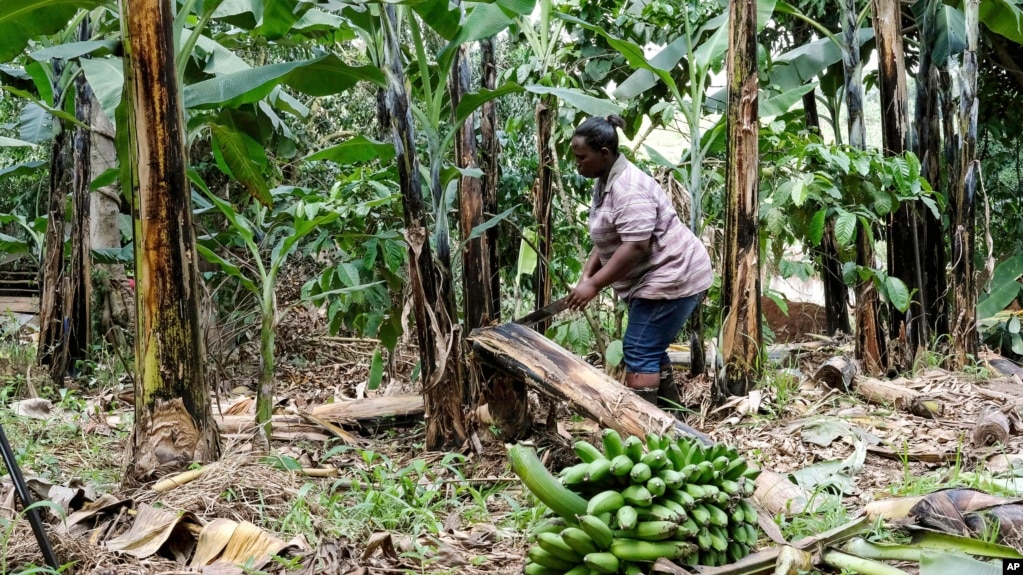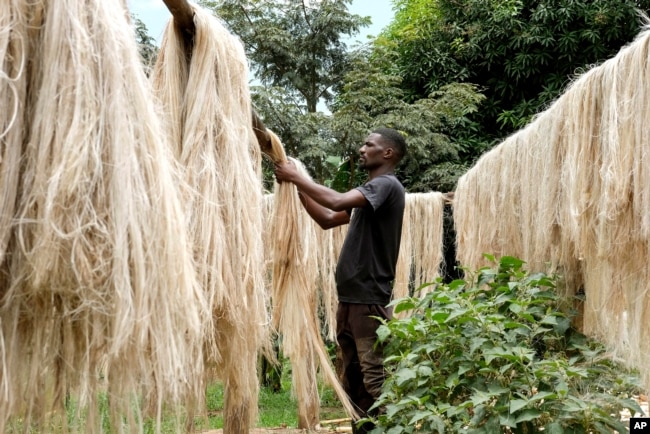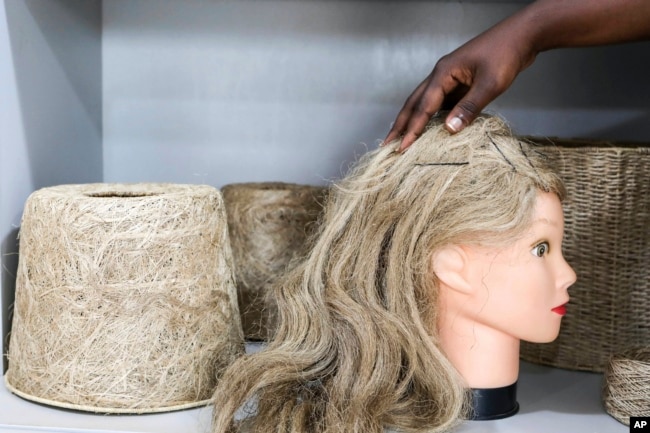Ugandan Business Turns Banana Fiber into Sustainable Products

Banana plant stems are mostly useless following harvest of the fruit. It takes time and work to remove the stem from the ground. Then the farmers have to crush the plant waste to small pieces to spread around crops.
But is there a better way to deal with the plant waste? A company in Uganda says yes. The business is collecting banana stems to process the plant tissue and make products.
The idea is both new and sustainable in the East African country where banana plants are very important. Uganda has the highest rate of banana use in the world. The country is Africa’s top banana crop producer.
A young local business, TEXFAD, deals with the banana plant waste. Now, it says it is making a profit from all the rotting stems. TEXFAD collects some of the plant tissue and uses it to make products like floor coverings, containers for home goods and more.

Employee Anathole Kisakye dries banana fiber threads at Tupande Holdings Ltd workshop, in Kiwenda village, Busukuma, Wakiso District. Uganda, Wednesday, Sept. 20, 2023. (AP Photo/Hajarah Nalwadda)
John Baptist Okello leads the business division of TEXFAD. He told the Associated Press that the business made sense in a country where farmers “are struggling” with millions of tons of banana-related waste.
The company works with seven different farmers’ groups in western Uganda. It pays $2.70 for a kilogram of dried fiber.
David Bangirana is the leader of one such group in Sheema District. He said only a small part of the stem is used for fiber. He said that the rest of the crushed plant remains is returned to the farmer for use as fertilizer.
TEXFAD also takes material from a third party, Tupande Holdings Ltd. Its trucks transport banana stems from farmers in central Uganda. Tupande’s workers search the stems for the best candidates as fiber. Machines then turn the fiber into threads, thin long pieces of cloth.
Aggrey Muganga is the team leader at Tupande Holdings Ltd. He said his company deals with more than 60 farmers who continuously supply surplus raw material.
That number is only a small part of what is available in a country where banana crops makes up more than a million hectares of land.

A view of a banana fiber wig and lampshades displayed at Texfad Showroom in Kira, Wakiso District, Uganda, Wednesday, Sept. 20, 2023. (AP Photo/Hajarah Nalwadda)
Banana production has been increasing over the years. The Uganda Bureau of Statistics found that banana production rose from 6.5 metric tons in 2018 to 8.3 metric tons in 2019.
Muganga said that they put extra income in the hands of the farmers. He added, “We turn this waste into something valuable that we sell to our partners who also make things.”
At a plant just outside the Ugandan capital Kampala, TEXFAD employs more than 30 people who use their hands to make products from banana fiber. The company is now exporting some products to Europe.
Such products are possible because “banana fiber can be softened to the level of cotton,” Okello said.
The company can make some paper products with the material. It is working with researchers to experiment with possible cloth from banana fiber. However, it does not have the technology to make clothing, Okello said.
Words in This Story
stem – n. the main long and thin part of a plant that rises above the soil and supports the leaves and flowers
sustainable – adj. involving methods that do not completely use up or destroy natural resources
rotting – adj. to decay due to the action of fungi or bacteria